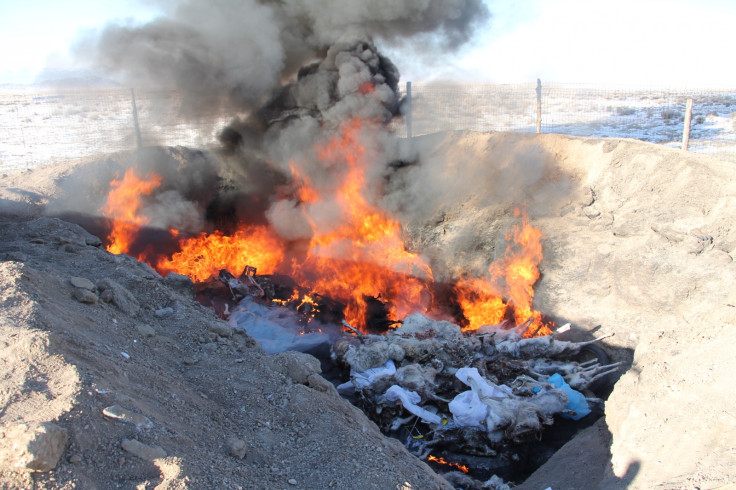Mongolia: Deadly virus causes another mass die-off of endangered Saiga antelopes
2,500 animals of the critically endangered species have died in an outbreak that began in livestock.
Around 2,500 Saiga antelopes have died in Mongolia since December 2016, struck by a deadly virus. This is the first time an infectious disease outbreak has led to the death of Mongolian Saiga antelopes.
The Saiga antelope is a critically endangered species. Recognisable by its unique bulbous nose, its global population has been dramatically reduced in recent years, due to disease, just like during the massive die-off that happened in Kazakhstan in 2015. The animals are also threatened by poaching and habitat loss. They are hunted down for their horns, which are used in traditional medicine. It is estimated that Saiga antelopes' numbers have gone down by 90% in the last decade.
Mongolia is home to a unique subspecies of Saiga antelope known as Saiga tatarica mongolica. Only 10,000 antelopes were thought to roam in the Great Lakes Depression of Western Mongolia, so a loss of 2,500 animals in the space of two months – 25 per cent of the population – deeply worries conservationists. Although the outbreak shows signs of decreasing, it is not yet over and may continue well into the spring.
The cause of this new epidemic is the livestock virus PPR – or "Peste des Petits Ruminants". It was first diagnosed in sheep and goats in September of 2016, and is thought to have spilled over to Saiga antelopes a few months later.
"This is the first deadly infectious disease outbreak known to have occurred in the Mongolian saiga," said Dr Amanda Fine, a veterinarian and associate director of the Wildlife Conservation Society (WCS) Wildlife Health Program in Asia. "In the past, pasteurellosis was recorded as a cause of mortality in some saiga but never with such rapid spread and deadly results. The situation is tragic and widespread."
Other species may be affected by the death of Saiga antelopes. Snow leopards, which are already rare, may struggle as a result of a depleted prey base.
Saving the Saiga antelope
A rapid response team has been set up to deal with the outbreak, supported by WCS. Its work has so far involved collecting samples from dead saiga, conducting animal autopsies and evaluating sick saiga. An important goal is to assess the affected animals' age and sex, to come up with better strategies to protect the species against the virus and help it recover.

Immunisation of livestock is also a priority for a long-term protection of Saiga antelopes. "The best way to prevent PPR is through further immunisation of livestock in not only saiga range areas but other affected species range areas. Stress-free conditions for recovering saiga and access to food and water resources should be provided, in order to save the last population of Mongolian saiga from extinction," said Dr Fine.
The Mongolian National Emergency Committee working on the crisis is dedicated to helping the population recover, but the country's economic woes mean that its action is limited. Mongolian officials are hoping to gain support from the international conservation community to contain the outbreak and save an already dangerously threatened species from extinction.
© Copyright IBTimes 2025. All rights reserved.






















